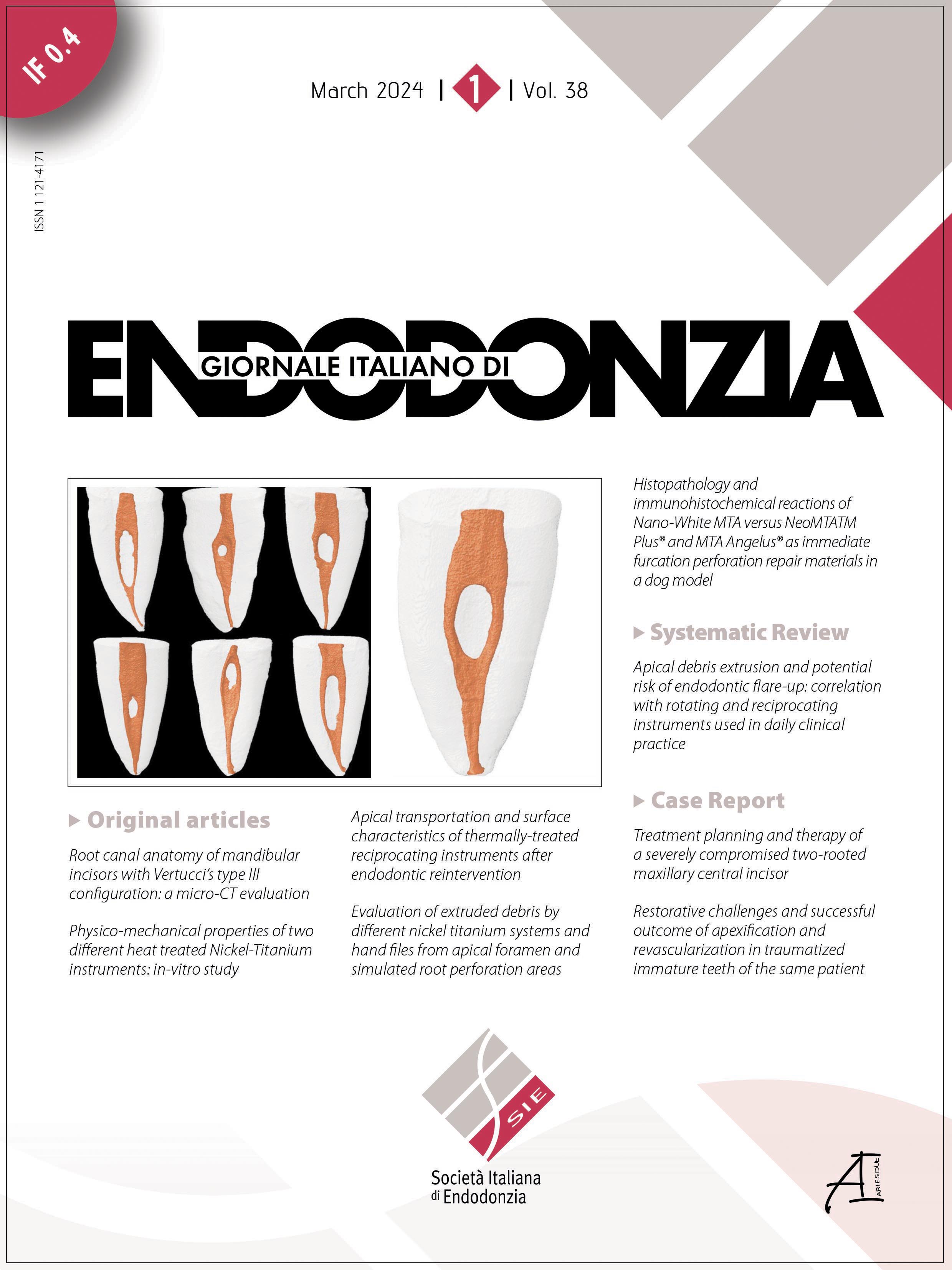Systematic Review
Vol. 38 No. 1 (2024)
Apical debris extrusion and potential risk of endodontic flare-up: correlation with rotating and reciprocating instruments used in daily clinical practice

Publisher's note
All claims expressed in this article are solely those of the authors and do not necessarily represent those of their affiliated organizations, or those of the publisher, the editors and the reviewers. Any product that may be evaluated in this article or claim that may be made by its manufacturer is not guaranteed or endorsed by the publisher.
All claims expressed in this article are solely those of the authors and do not necessarily represent those of their affiliated organizations, or those of the publisher, the editors and the reviewers. Any product that may be evaluated in this article or claim that may be made by its manufacturer is not guaranteed or endorsed by the publisher.
Received: 18 October 2023
Accepted: 28 December 2023
Accepted: 28 December 2023
1498
Views
318
Downloads












